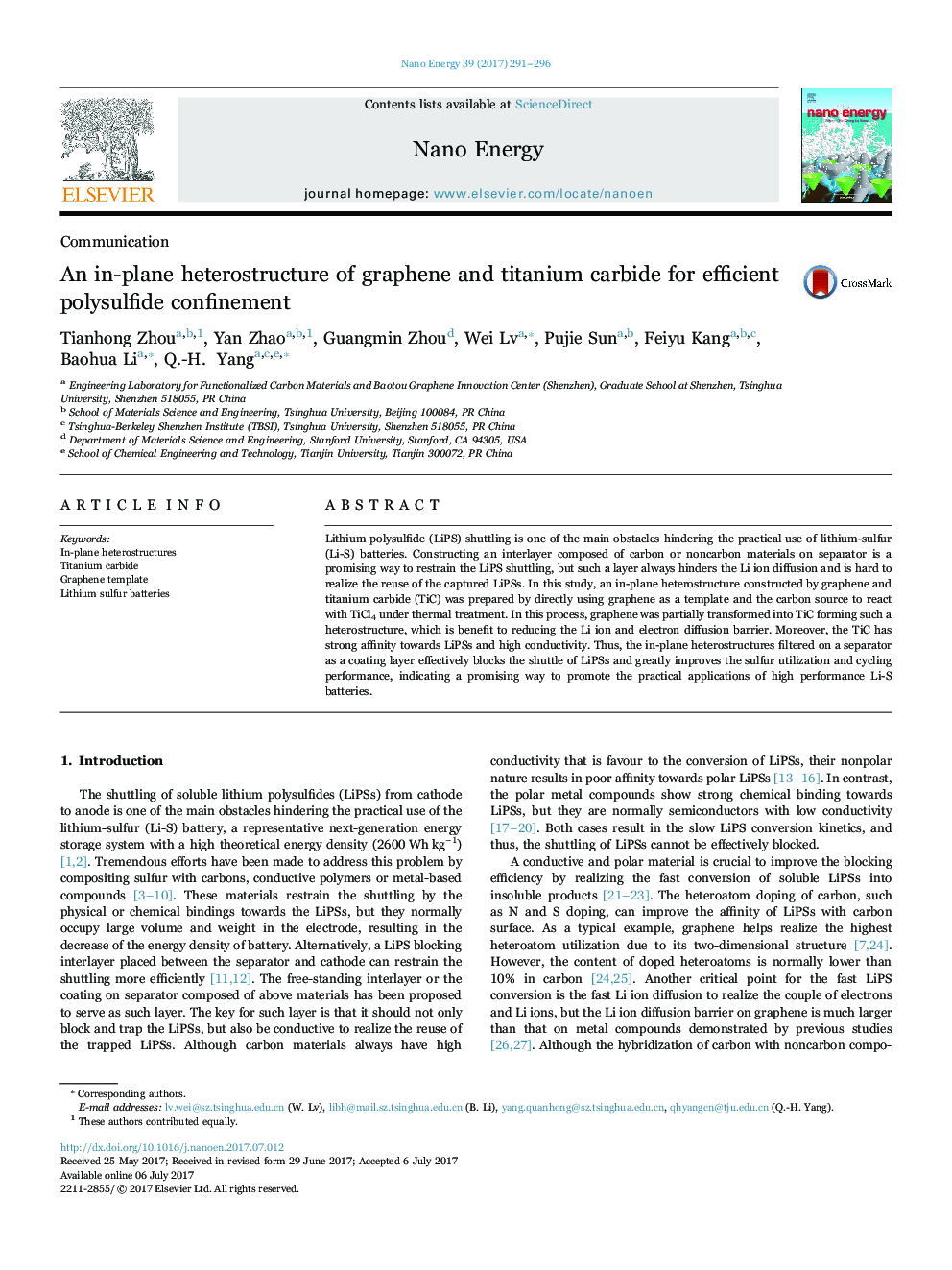| Article ID | Journal | Published Year | Pages | File Type |
|---|---|---|---|---|
| 5452404 | Nano Energy | 2017 | 6 Pages |
â¢An in-plane heterostructure constructed by graphene and conductive titanium carbide (TiC) is prepared.â¢A part of graphene was transformed into TiC using graphene as the template and carbon source.â¢The coating layer constructed by such heterostructures on separator effectively restrains the polysulfide shuttling.
Lithium polysulfide (LiPS) shuttling is one of the main obstacles hindering the practical use of lithium-sulfur (Li-S) batteries. Constructing an interlayer composed of carbon or noncarbon materials on separator is a promising way to restrain the LiPS shuttling, but such a layer always hinders the Li ion diffusion and is hard to realize the reuse of the captured LiPSs. In this study, an in-plane heterostructure constructed by graphene and titanium carbide (TiC) was prepared by directly using graphene as a template and the carbon source to react with TiCl4 under thermal treatment. In this process, graphene was partially transformed into TiC forming such a heterostructure, which is benefit to reducing the Li ion and electron diffusion barrier. Moreover, the TiC has strong affinity towards LiPSs and high conductivity. Thus, the in-plane heterostructures filtered on a separator as a coating layer effectively blocks the shuttle of LiPSs and greatly improves the sulfur utilization and cycling performance, indicating a promising way to promote the practical applications of high performance Li-S batteries.
Graphical abstractDownload high-res image (261KB)Download full-size image
